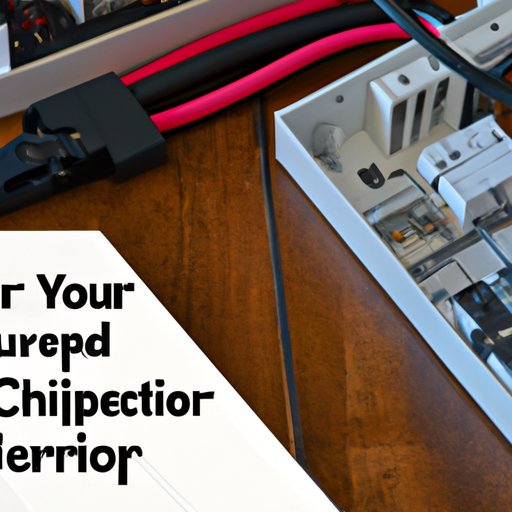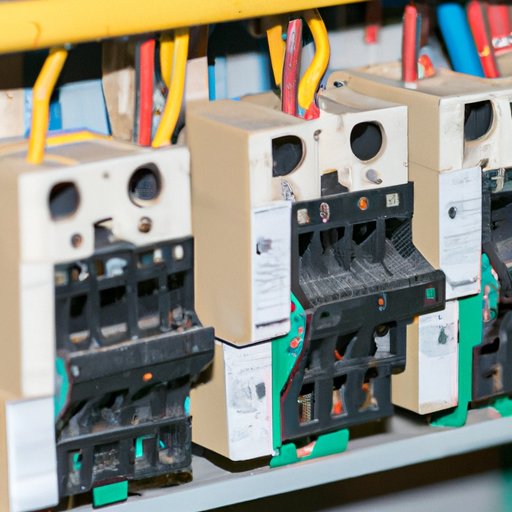Introduction
A circuit breaker is an essential safety feature in a home’s electrical system. It is designed to protect your home and its appliances from electrical overloads or short circuits that can lead to fire hazards. Whenever an electrical current exceeds the breaker’s safe limits, it automatically turns off the circuit to prevent damage.
Although breaker tripping is an essential safety feature, it can also be a sign of an underlying problem that needs to be addressed. Identifying the root cause of breaker tripping should be a priority, as it can indicate potential safety hazards.
Causes of Circuit Breaker Tripping: Understanding the Basics
Before diving into the causes of circuit breaker tripping, it’s essential to understand how circuit breakers work to prevent electrical hazards.
Circuit breakers are designed to detect the amount of current flowing through an electrical circuit. Whenever the current exceeds the breaker’s safe level, it will “trip” or break the circuit to protect the system from damage. There could be several causes of a circuit breaker tripping, such as:
- Overloading the circuit
- Short circuits
- GFCI trips
- Faulty breakers
- Aging electrical system
Identifying the cause of circuit breaker tripping is crucial to understand how to fix the problem and prevent it from recurring.
Is Overloading the Main Reason behind Frequent Breaker Tripping?
Overloading is the most common cause of circuit breaker tripping. An overloaded circuit occurs when you plug too many electrical devices into one circuit, drawing more current than the circuit can handle. This excess current causes the circuit breaker to trip, breaking the circuit and shutting off the power.
Here are some signs of an overloaded circuit:
- Flickering lights
- Warm electrical outlets
- Burning smells coming from outlets or switches
To prevent an overloaded circuit, you should reduce the number of devices that are plugged into one circuit. A good rule of thumb is to spread out your devices across multiple outlets or circuits.
Common Electrical Devices that Could Be Overloading Your Circuit Breaker
While overloading is the most common cause of breaker tripping, some electrical devices may be more prone to overloading your circuits.
Here are some common electrical devices that could be overloading your circuit breaker:
- Refrigerators
- Washing machines and dryers
- Dishwashers
- Air conditioners
These devices draw a significant amount of current to operate. To prevent overloading, it’s essential to spread these devices across multiple circuits. For instance, you could put the refrigerator on a dedicated circuit, leaving other appliances on other circuits.
4 Quick and Easy Steps to Troubleshoot and Fix Tripping Circuit Breaker
While overloading is the most common cause of circuit breaker tripping, other issues may cause this problem. Here are four quick steps for homeowners to troubleshoot and fix common circuit breaker issues:
- Step 1: Identify the source of the problem by unplugging all devices from the circuit that tripped the breaker.
- Step 2: Reset the breaker and see if it trips again when you turn on the devices one by one.
- Step 3: If the breaker trips when you turn on a specific device, it’s likely that the device is faulty and needs repair or replacement.
- Step 4: If your breaker trips frequently, consider contacting a licensed electrician to diagnose and fix the issue.
It’s essential to unplug all devices from the circuit to identify the source of the problem. If you determine that a specific appliance is causing the circuit to trip, it’s best to consult a professional to check it out.
When to Call an Electrician: Signs That Your Tripping Breaker Needs Professional Attention
There are situations where homeowners may not be able to address the root cause of breaker tripping on their own. Here are some signs that indicate that you need a professional electrician’s help:
- Frequent breaker tripping
- Circuit breaker not resetting
- Burning smells coming from outlets or switches
- Warm electrical outlets
If you notice any of these signs, don’t try to diagnose or fix the issue yourself. It’s best to consult a licensed electrician who can diagnose and fix the problem safely and efficiently.

Upgrading Your Home Electrical System: A Comprehensive Guide to Preventing Circuit Breaker Tripping
Upgrading your home’s electrical system can be an excellent way to prevent circuit breaker tripping. An upgraded electrical system can support the new technology and appliances, reducing the likelihood of electrical fires and overloading circuits.
Here are some ways to upgrade your home’s electrical system:
- Replace your old circuit breaker with a new, high-quality circuit breaker.
- Upgrade your wiring to support the electrical demands of your devices and appliances.
It’s essential to work with professionals who can help you choose the best circuit breakers and wiring for your specific needs.
Protecting Your Home Appliances: How Investing in Surge Protection Can Help Prevent Breaker Tripping
Power surges can also contribute to breaker tripping. Power surges occur when there is a sudden increase in electrical voltage, typically caused by lightning strikes, damaged power lines, or faulty electrical wiring.
Investing in surge protectors can help protect your appliances from the effects of power surges. Here are some tips for selecting the best surge protectors for your home:
- Choose surge protectors with high joule ratings to ensure maximum protection.
- Look for surge protectors with a warranty to ensure they’re reliable.
- Select surge protectors that fit your budget and needs.
Surge protectors prevent electrical overloads caused by power surges from damaging your appliances, reducing the likelihood of tripping circuit breakers.
Conclusion
A tripping circuit breaker can be a frustrating and potentially dangerous issue for homeowners. In this article, we’ve explored the most common causes of circuit breaker tripping and how to fix the issue.
Remember to take safety precautions when dealing with electrical issues. Always consult a licensed electrician when necessary, especially if you notice signs of electrical hazards.
By following the tips and advice outlined in this article, you can prevent circuit breaker tripping and keep your appliances and home safe.
